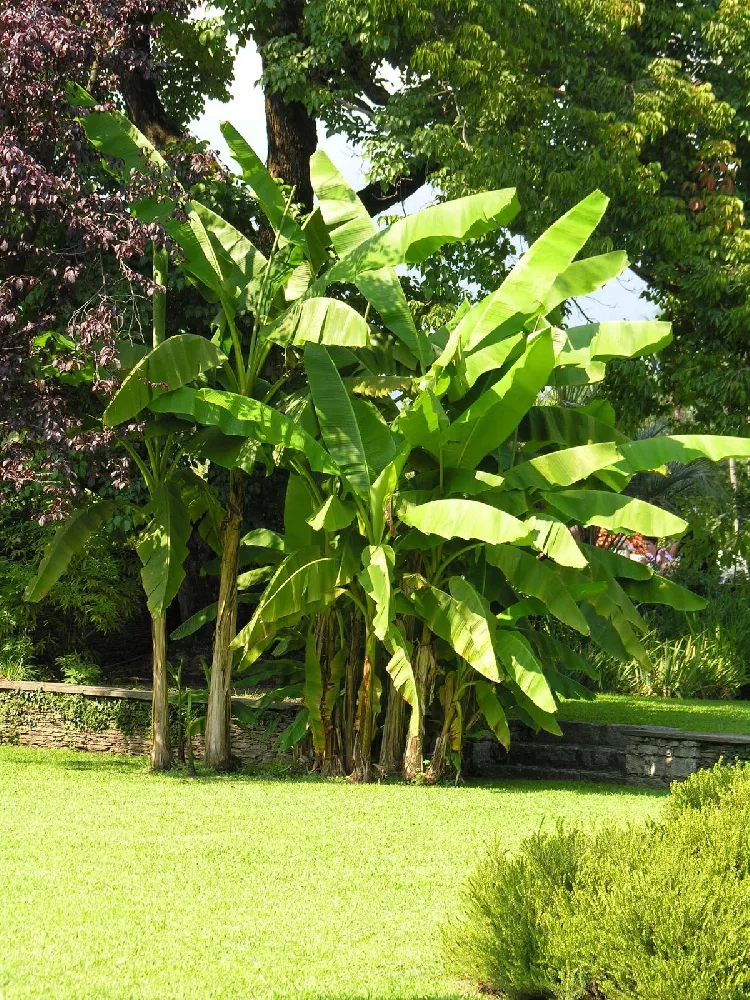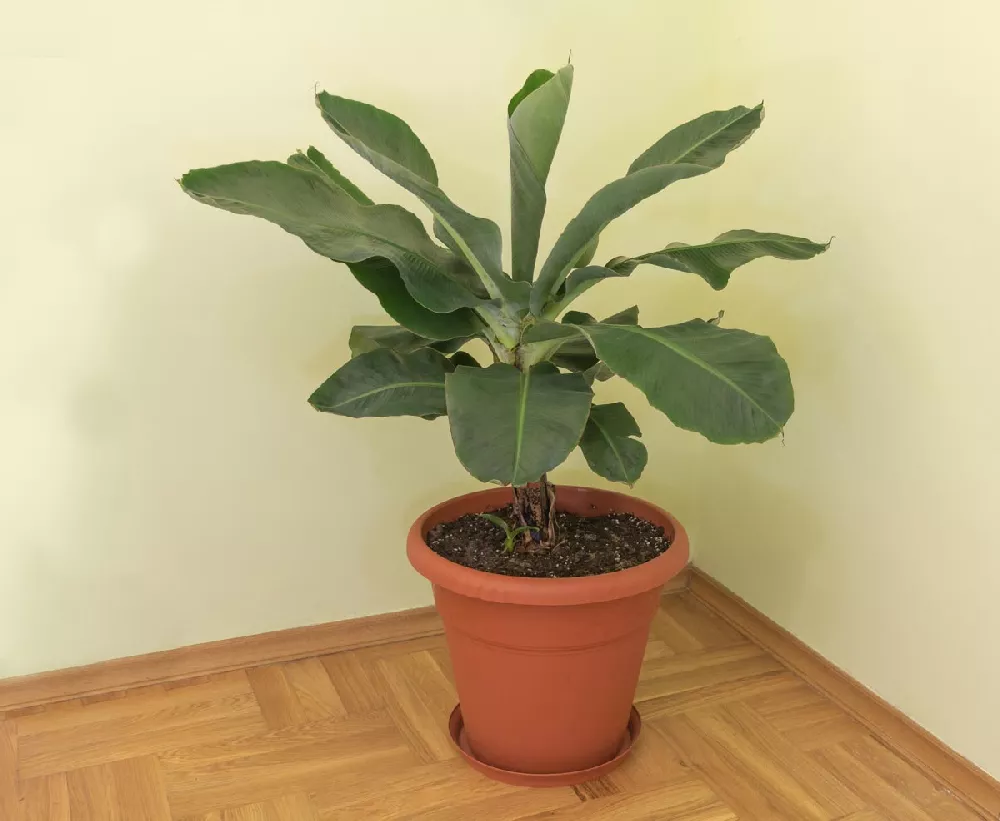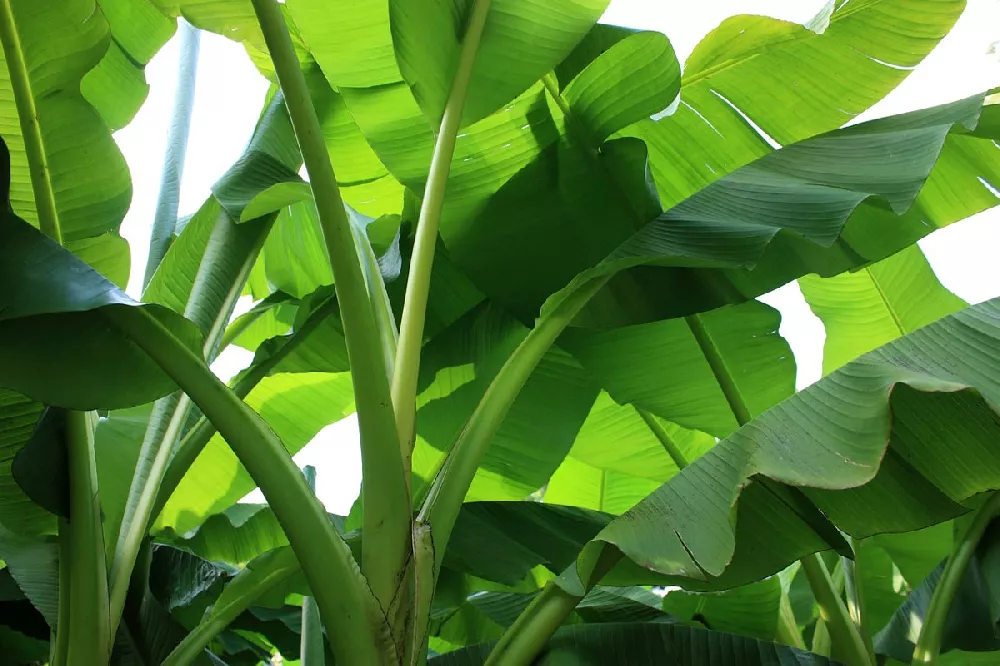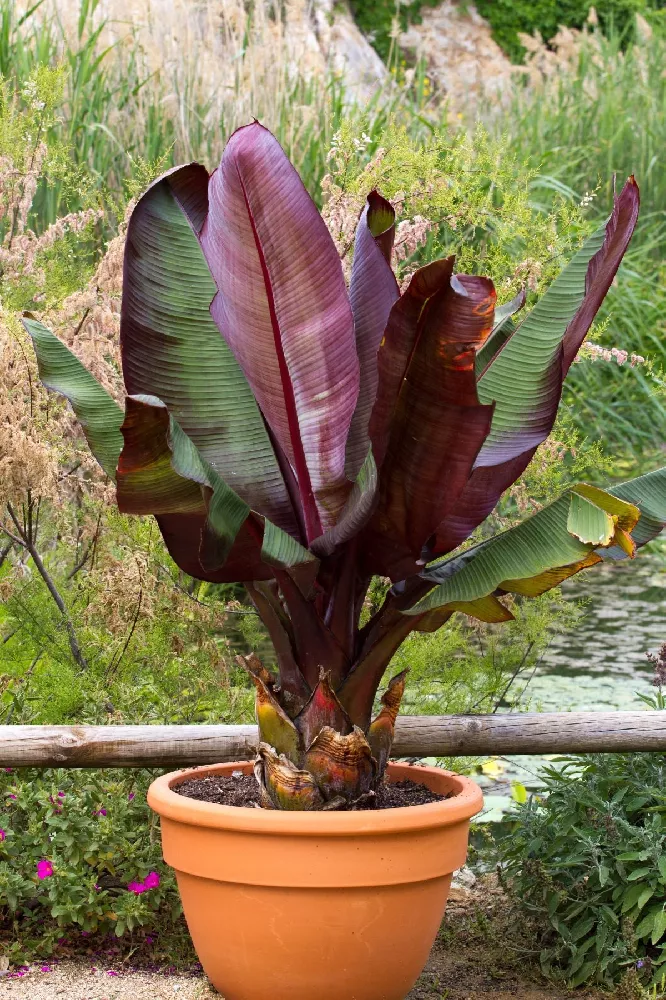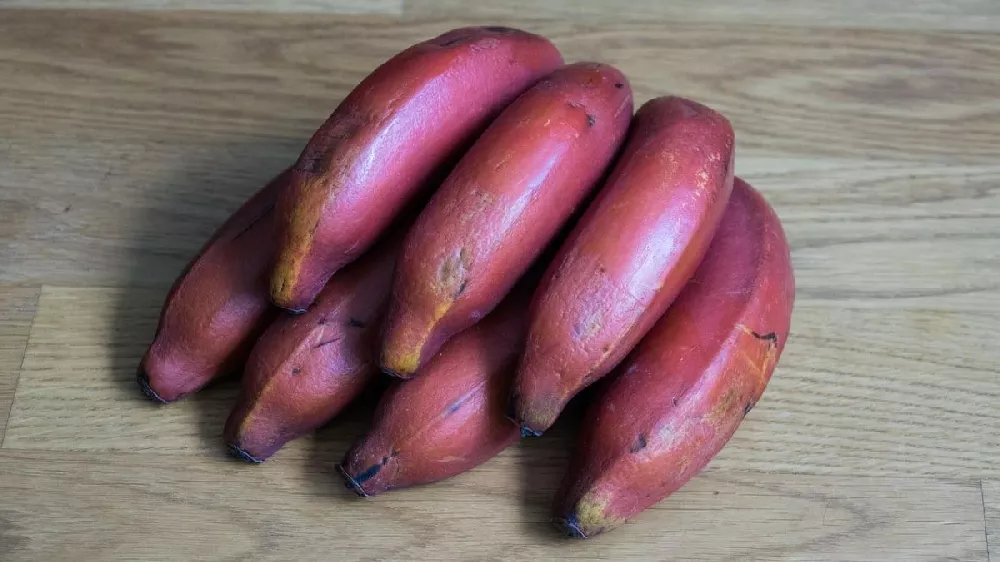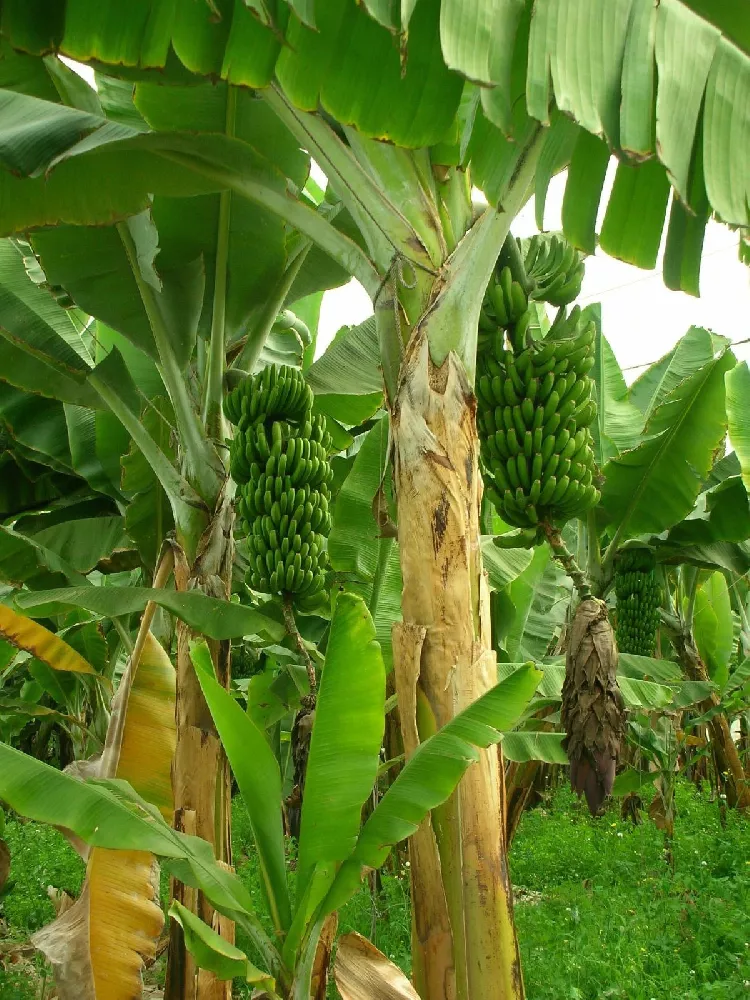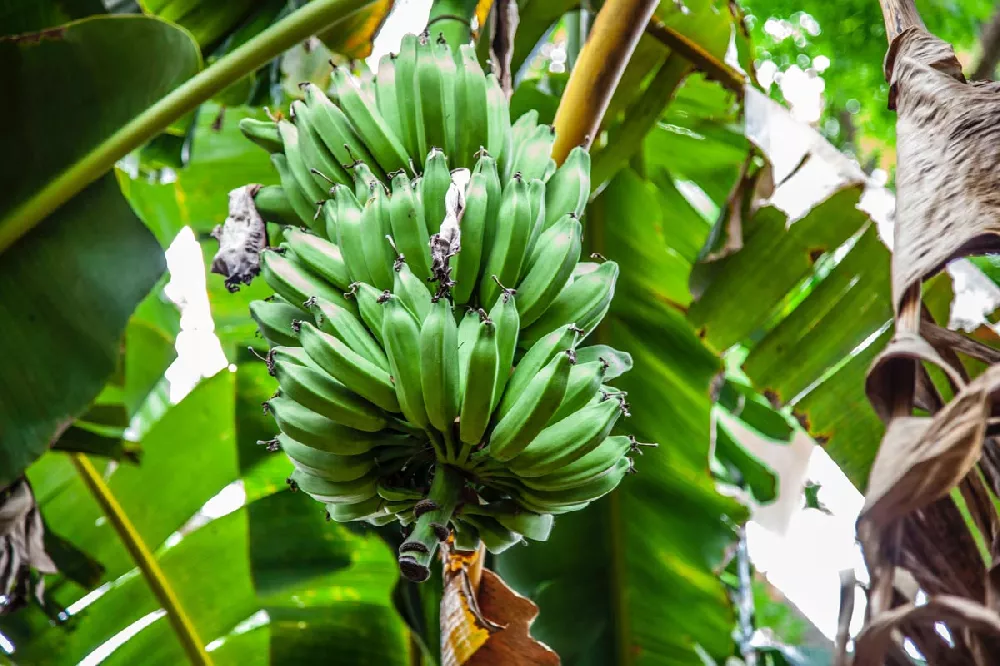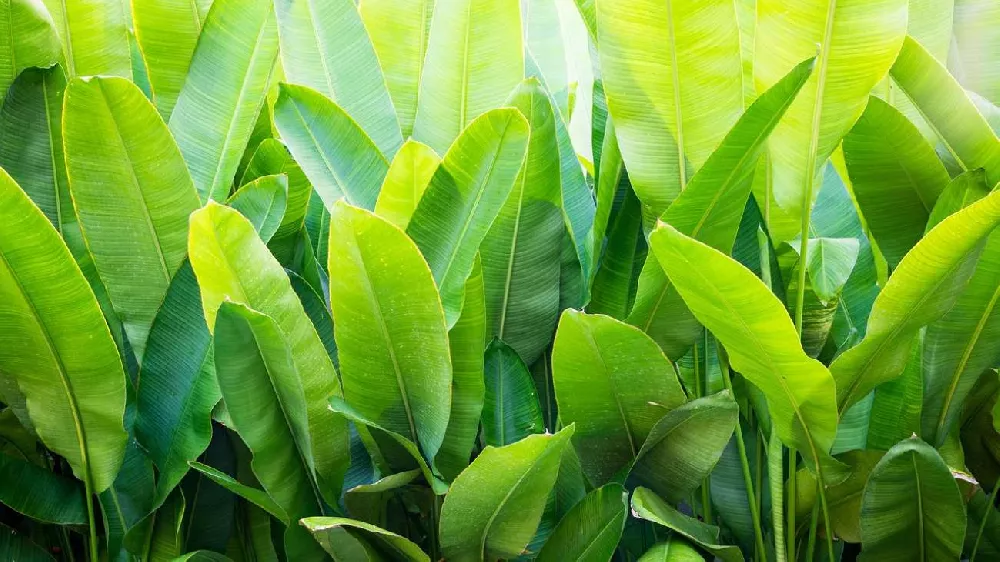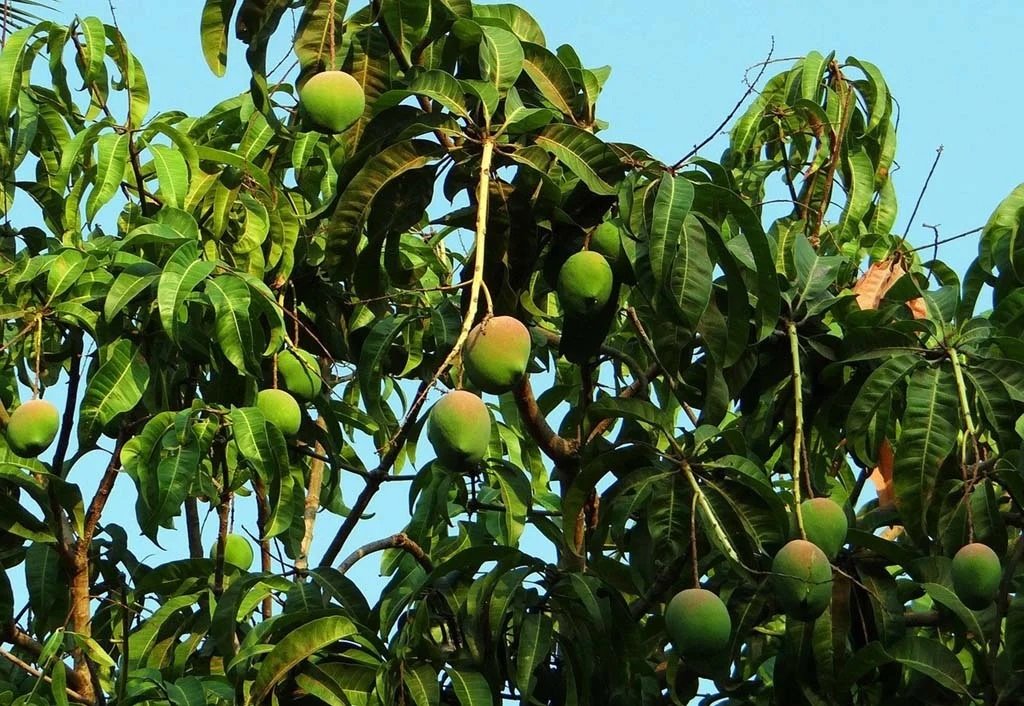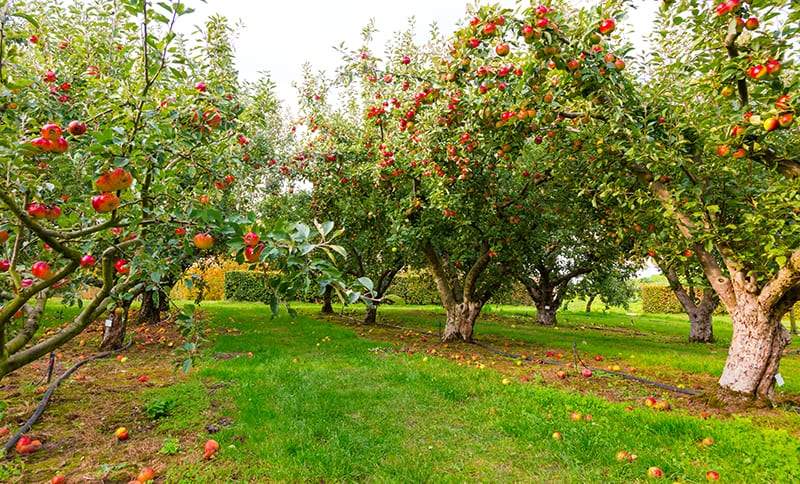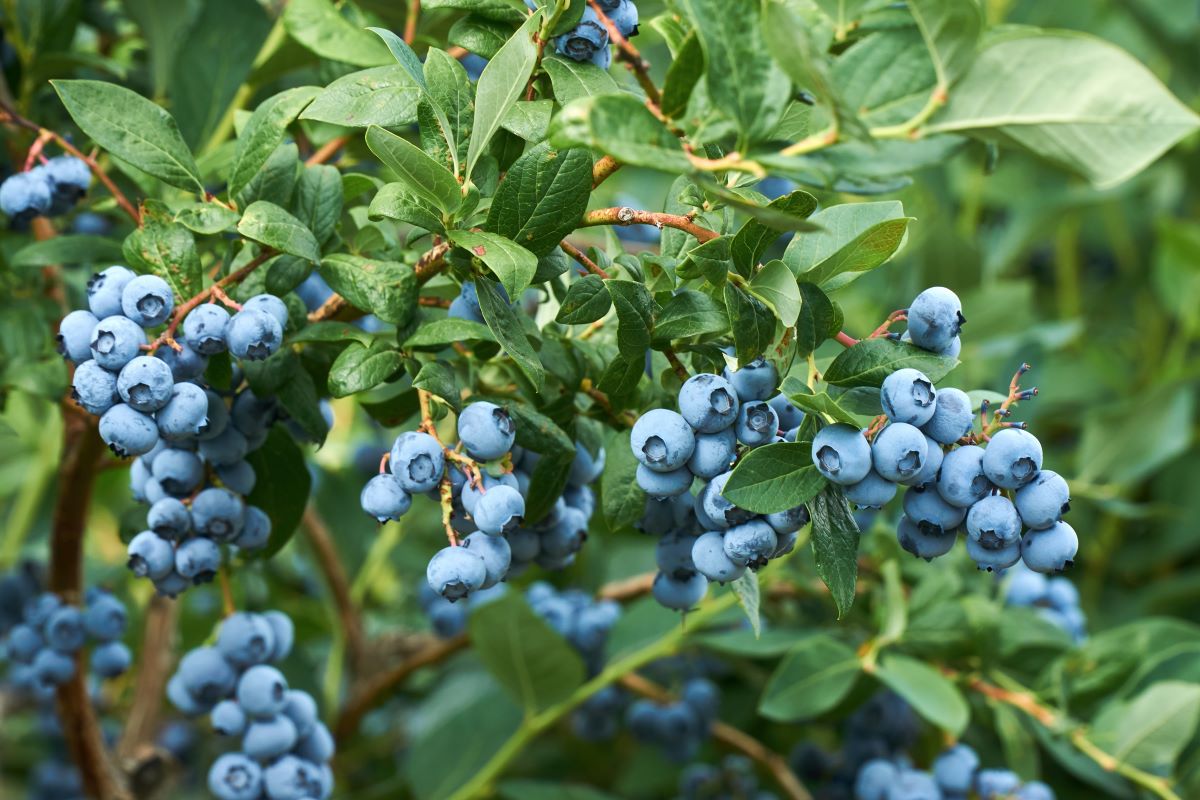- Home >
- Banana Trees
Banana Trees for Sale - Buying & Growing Guide
8 Results
-
Growing Zone(s): 5-11$47.95
$52.95Save up to 9% -
Growing Zone(s): 3-11 / 8-11$59.95
$119.95Save up to 50% -
Growing Zone(s): 3-11 / 8-11$52.95
$66.95Save up to 20% -
Growing Zone(s): 3-11 / 8-11$74.95
$99.95Save up to 25% -
Sold OutGrowing Zone(s): 3-11 / 8-11$31.95
-
Sold OutGrowing Zone(s): 3-11 / 9-11$26.95
-
Sold OutGrowing Zone(s): 3-11 / 9-11$26.95
-
Sold OutGrowing Zone(s): 3-11 / 9-11$26.95
How to Grow Banana Trees
How to plant banana trees
If you live in USDA hardiness zone 10-11, you can plant your banana tree outside. If you are in a cooler climate, keep your banana in a pot that you can bring inside in the winter. Plant your banana tree where it will get at least six to eight hours of sun each day, in fertile, well-drained soil. Avoid clay soils if possible, or amend them with peat moss and compost. Bananas can range from two to 15 inches in height, so space your plants accordingly.
Dig a hole that is twice as wide and deep at your banana’s root ball, and sprinkle a liberal amount of compost in the hole. Place the plant in the hole with the rhizome (rootstalk) just below soil level. Fill the hole in with the excavated soil that has been enriched with compost. Tamp it down gently to eliminate air pockets.
Water your banana tree generously after planting. You can also fertilize it immediately with a slow-acting fertilizer designed for tropical plants. After planting, water your tree every few days until it is established and begins putting out new growth.
How to achieve maximum results
Bananas are tropical plants (they are actually not trees, but perennial herbaceous plants), and thus they will only do well and produce fruit in the Southern regions of the U.S. Although we recommend growing them in USDA hardiness zones 10 and 11, some gardeners have success with hardy varieties as far north as zone 8, if they are grown in a protected spot away from wind. Bananas are fast growers, and because of this they need frequent feeding and watering, and are best planted in rich, fertile soil.
How to Care for Banana Trees
Watering and nutrients
If you have a container-grown banana, water it whenever the soil dries out to a half inch below the surface. If your banana is planted outside, it needs about an inch of water a week. If it does not get this from rain, give the plant a thorough watering once a week. However, avoid waterlogged ground around the plant as the roots are susceptible to rot.
Bananas thrive with a regular application of fertilizer. Give your plant a monthly feeding of a balanced fertilizer (such as 8-10-8) which should be spread evenly around the base of the tree. Container-grown plants should also be fed monthly with a light application of fertilizer.
Pollination
Wild banana varieties are pollinated by bats or birds. Domesticated varieties, such as the Cavendish, do not require pollination. Male and female parts grow in each flower, with the male parts dropping off as the female parts develop into fruit.
Pruning
Bananas are pruned differently from most trees. Only allow one stem to grow and fruit at a time, pruning out all suckers. Once the main stem is about six months old, allow one sucker to develop as a replacement stalk for the next season. After your tree has fruited, cut back the fruiting stalk to 30 inches and allow it to die out, after which it can be cut back to the ground.
Pests and diseases
Pests that prey on banana trees include aphids, the banana weevil, nematodes, and various types of mites. Trim all diseased leaves and keep the base of the tree clear of debris to help stave off serious infections. A blast of water from the hose can dislodge insects as well. If you are not growing organically, chemical insecticides may be effective.
Diseases of the banana include fusarium wilt, leaf spot, and anthracnose. Crown rot can also be a problem. A garden disease control spray may help with these issues. Consult your local county extension agent to find other appropriate mitigation agents for your region.
Harvesting
Your banana tree will be ready for harvest roughly nine to 15 months after planting. Harvest when the bananas are still green and firm to the touch, but have reached the size and shape of a full-grown banana. The flowers at the end of each fruit should be dry and easily removed. Cut off the whole stalk with a sharp knife or saw and hang them in a dry and shady spot to finish ripening.
